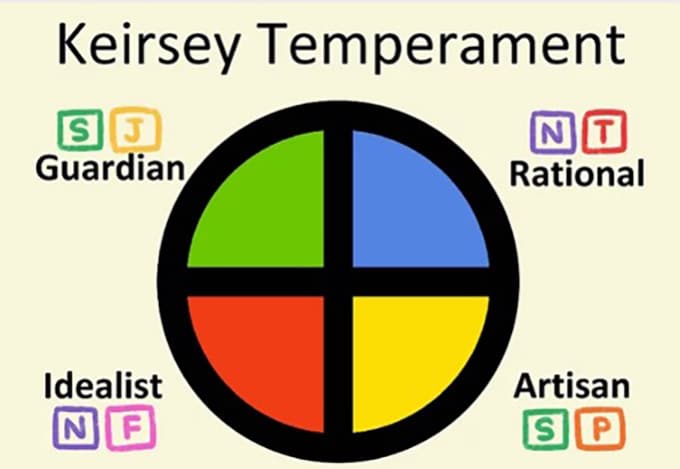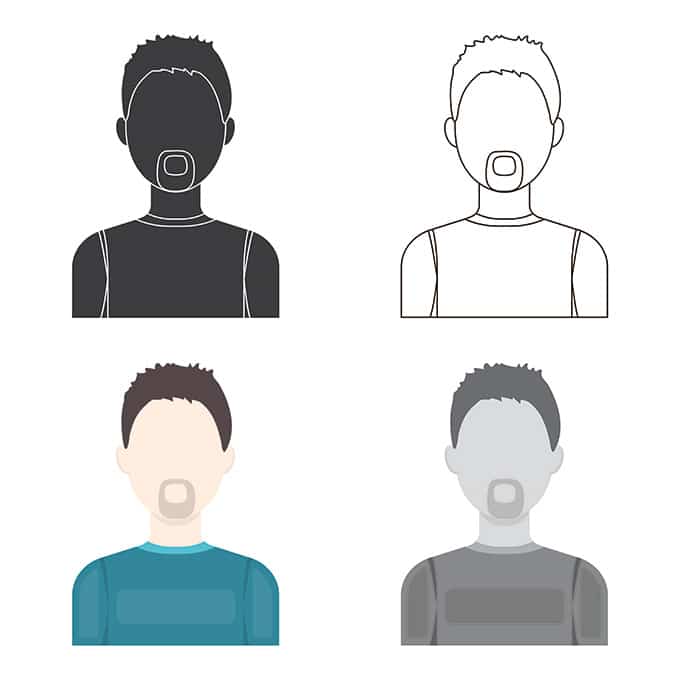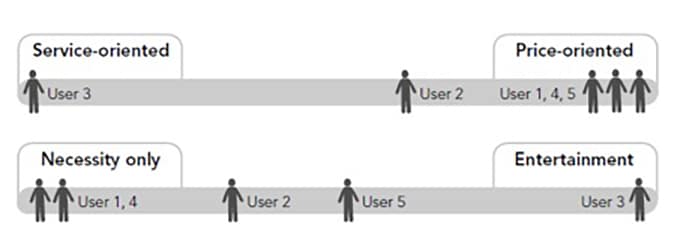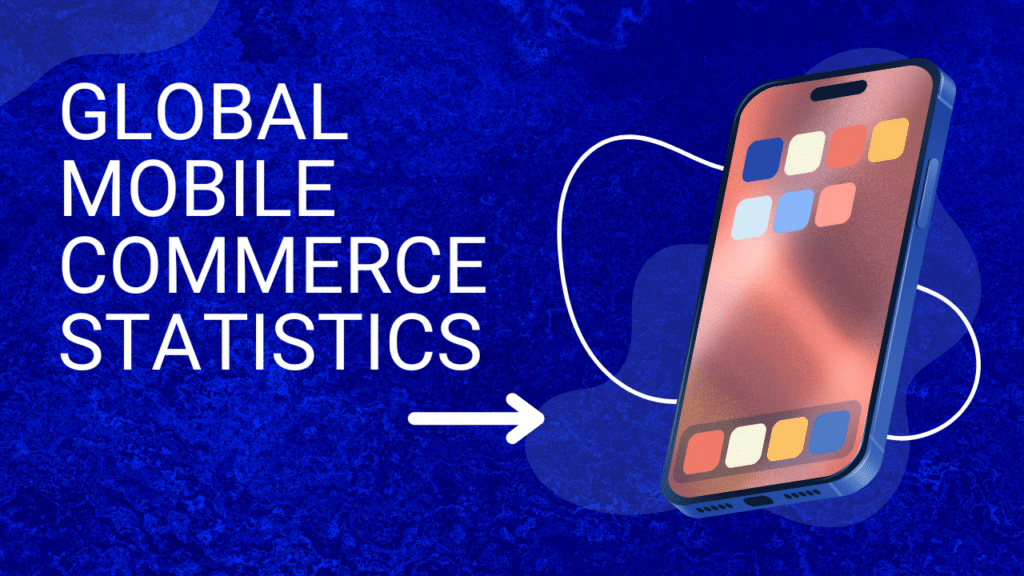The French proverb ‘le client est roi’ sums up the key to success for all marketing initiatives. “The customer is king,” marketers know it all too well. They are fully aware that their success and failure depends on how much their customers are satisfied. As a matter of fact, most companies are aware of the fact that knowing your customers intimately is the only way to please them. But it’s complicated to “really” know customers. Trying to extract that data in a meaningful way is not so apparent.
The struggle is real.
But why do companies struggle so much to collect this information, especially in this digital age?
Most companies encounter one or more of the following challenges when trying to blend their market data with their selling process:
- Companies with small budgets don’t have the resources necessary to launch market research that will help them understand their customers better.
- Larger budget companies, on the other hand, have the resources and have likely conducted market research. However, it’s not about just collecting the data – it’s about activating it, and making something meaningful out of it. How does the data tell a cohesive story and solve a problem?
- How to utilize technology to answer questions and collect information correctly.

Regardless the size of your company or its nature, it is fundamental to know how to gather your market data as a first step. Even companies with small budgets can find tools that allow them to conduct some form of market research. But what’s more important, how to use the data to communicate effectively with customers and site visitors.
Although this article is about personas, which is a method of creating that “actionable” form or documentation to activate into something meaningful, I would argue it’s not always necessary to have personas. If you can use that data to derive actionable insights about what needs to happen on your site to persuade the different market segments, then no need for a persona.
Ultimately, every company needs an effective way to collect the correct information. Many find that creating personas is the way that they can consume and use the information more effectively.
And like any other documentation or research, personas are only effective as the data provided in them and the way they are utilized. Like anything else, they are tools or data points. The type of information that they contain and the exact usage are key components.
The aim of writing this article is mainly surrounding the importance of building a data-driven website with solid market research. We will hone in on the method of personas: how to collect meaningful data, create personas that work, and utilize them effectively. It will also explore how to use personas to bridge the gap between business objectives and users’ goals and motivations. Understanding how to utilize personas can help enhance product, processes, website’s copy, design, navigation and various elements.
There are two distinct stages of the persona creation process, the first step is to understand your visitors through in-depth market research, analytics assessments and online behavioral monitoring. The next step is to develop empathy towards your visitors by translating all of the data you’ve collected into actual personas.
What are buyer personas?

Imagine a situation where you are invited to one of your relatives’ birthday party and, of course, you are not going to show up there empty-handed, you will automatically start wondering what could you possibly bring them as a gift.
You will start scrolling around between all the possible gifts you can get, then after a while, you’ll narrow it to three of four possible choices and ultimately choose one based on your knowledge of the birthday party person. If you know them well enough, you’ll get them something that they will be fascinated by, but if you don’t, probably you’ll fail to pick the right one and you’ll end up offering them something they don’t appreciate.
Now, imagine the same situation, but this time with a large number of people, all expecting that you bring them the right gift. Boy, with one person we struggle to find that special something, so how about an entire group of people?

But businesses face this predicament every day. They are selling a product or service to people that aren’t family or friends, but rather visitors to the site. The question is, how do you deliver the right information and products they seek or desire? How do you give them an experience they’ll appreciate?
For any business, this is a constant problem. Because while you may address the needs of one segment, you may completely ignore others.
What’s the difference between user and buyer personas?

When it comes to personas, there are different types that will be appropriate for different aspects of the business. And you’ll hear a lot of different names thrown out there: Design, marketing, buyer and user personas. Many of these are actually overlapping types of personas. Ultimately, the biggest difference is who will be using your product (user persona) or who will be buying the product (buyer persona).
For example, the children’s toy is sold to both mom and kid, but the ultimate buyer is the mom, the user and nagger of the product is the child. In this case, you’d want to keep the user persona in mind because the buyer needs to see their child using and loving the product. But at the same time, you need to persuade them enough (i.e. educational, and no mess) to move forward.

A B2B example could be if you’re selling a software to a small or midsized company. Likely, the CEO won’t be “using” the product, however, they’re buying it so you need to figure out an angle that would appeal to them. And he will be also assessing from the actual users of the product, the marketers or designers, etc.
But if I’m deciding to optimize my website, I’d hope those who created the product or services have already thought of the “user persona.” Now my focus will need to be on that buyer persona.
The power of personas
The power of personas creation depends on how precise and accurate the information you integrate into their creation process. It is needless to say, the process of personas creations takes up a lot of attention to details and sophistication are demanded, and first and foremost believability.

As Alan Cooper put it in words in his famous book, ‘’The Inmates Are Running the Asylum’’: “The great power of personas is in their precision and specificity. To deal in aggregates saps that power.’’ This seems pretty simple when put that way, doesn’t it? Nothing is quite that simple actually, and indeed the devil is in the details.
A large number of marketers and designers fail to meet the needs of their customers when integrating their market search information with detailed descriptions for their personas. Sometimes the personas include unnecessary details and information. It’s important to remember the objective and why you are creating the personas. If it’s to understand the motivations and obstacles your website visitors face, those details are the important ones to focus on when putting together the persona.
What are the fundamental steps for gathering the right data?
The first blunder most people face during any time of segmentation is the research portion. The digital era made it easier to collect more data and a lot of it, but all that data made it more difficult to extract meaningful information. How do I effectively combine my analytics data with my survey data for a deeper understanding of the customer?

We’ve written an entire guide on this topic and if recommend that before you continue with this article to go back and read that guide.
Here is an overview of the different tactics you can deploy to collect meaningful data.
- Surveys
- Polls
- Focus Groups
- Usability Studies/Tests
- Customer Interviews
- Quantitative Data
- Analytics
- Heatmaps
- Video Recording
- AB Testing
- Social Media Analysis
- Zipcode Analysis (Census Data).
After collecting this data and noting your observation about the market, you can identify specific segments based on some of the noticeable trends in the data. This is by no means an easy activity. It’s a team activity with many members where the data is mapped out and categorized.

The way you group target market segments can vary, and it very much has to do with the product or service you offer. You can use many of these strategies, or limit it your segmentation to only a couple. The more granular you get, the more success you will have.
- Psychographic: Grouping them based on social status, lifestyle, personality type, and cultural commonalities.
- Decision Makers: Grouping your customers based on who makes the final purchase decision. This is especially relevant for b2b.
- Behavioral: With so much behavioral data, grouping them based on how they navigate the site, their tech savviness, how much they use an app, etc. is also a very good way Grouping customers by product usage. For example; light, medium or heavy users. This stage also factors in brand loyalty and the type of user.
- Geographic: Because you collect geographic date through the census and zip code analysis you conducted, this may be helpful. Grouping them depending on the region can also lead socioeconomic grouping by default since most small regions have that commonality.
- Distribution: Grouping visitors on the way they prefer to receive your product is preferable. Another grouping within this description can include how they contact, renew, cancel (via phone, web, chat, little to no interaction with cs, much interaction, etc)
- Demographic: The most common grouping, which can be dangerous because grouping by demographic only is not granular enough, but definitely a starting point. Demographics include age, income level, gender, family size, religion, race, nationality, language, etc.

- Don’t define your segments too broadly. This will give you a greater opening to a competitor who targets more narrowly.
- Organize your business by market segments. Many begin by establishing market-focused teams or groups which later get organized into a market-focused business model.
- Manage your segments globally. Sometime a regional organization can set you up to be blind-sided later by a more dynamic global economy.
- Complete your analysis and research (strategic market segment portfolio), then be bold about attacking those segments.
Again, this should be a group activity, because as you can see there is a lot of information and data. This is like most CRO activities, you need more than one set of eyes to take a look at data to draw better conclusions.
Once you’ve gone through this exercise, you should have 4 – 5 detailed segments.
About market research
According to Alan Cooper, a great source of raw data are your actual users and the investigation phase is a very useful way to collect the information you need from them to know them a lot better. This includes both contextual inquiry and ethnography research.

Contextual inquiry and ethnography research are both qualitative research methods to help gaining first hand-materials and understanding in depth the behavior of users in their natural environment or context.
When conducting an ethnography research, it is highly recommended at this stage to be an active part of the activity. The aim behind launching this kind of research is to document and record the practices of the users to be later interpreted and generate more data.
While contextual inquiry revolves around interviewing your users and asking them opened and yet well-planned questions about the interaction and trying to understand their side of the experience and what they are going through when using the product that you are offering. Note that contextual inquiry research is usually conducted as a one on one interaction with the user in their own context.
Criteria to Consider When Crafting Your Personas?

The power of personas creation relies in the fact that through this creation, the spectrum of visitors becomes more focused, helping conversion optimizers and marketers to see through the customer lens. Taking that market segment and creating a persona out of it requires time and consideration:
Specificity
Personas are mainly about developing a close enough, overall description of your users and what they are trying to accomplish and why they pursuing that specific goal in particular. In simpler words, the more specific you are about your personas the more they are useful tools to help you drive more customers through the conversion funnel.

Some argue that personas need extra specificity: for example, persona David, he’s not just a vice president to unknown company, rather he is VP of the company ‘the digital squad’. Generally David has a lot of expertise in the field of digital marketing, however, if you want specifics you can say he has been working in this domain for 19 years so far. And you can go on forever with how detailed you want to be.
However, in our experience, we recommend that you don’t spend so much time crafting these details. It helps maybe clarify that person, but being so specific with the details in terms of what your objective is as a conversion optimizer, is just unnecessary.
Precision
The idea is that creating personas that are alike, especially at an idiosyncratic level, is a clear indication that you probably have missed something out during the data analysis process. It is not likely to have personas with the same descriptions for the same product.

Generalizations
An over simplified persona is definitely not what you are looking for. Otherwise stick to using market segments. A good persona description is never simplified or tosses around generalizations of any kind. But rather, it reflects at first and foremost the personality traits description, along with desires, goals and wants of market segment it represents.
Every visitor is unique. So how can one persona carry all personality traits for an entire market segment?
How the four temperaments are related to the creation of Personas?
Historically speaking, setting up a categorization for the different and various human personalities out there into just a few main groups has been controversial because humans are so unique and diverse. However, you can draw many similarities from them in terms of personality traits and the overall temperaments.
Aristotle’s vision of the four temperaments was unique and different from the rest of the other philosophers and psychologist to follow. However, his classification was a great source for inspirations and insights for others to come.
According to him, despite all the uniqueness and differences people entail in their traits, they can be categorized into these four temperaments to be either hedonic, proprietary, dialectical, or ethical.
Years after him, these concepts have shifted a bit to shed light on more or less the same typologies, but this time from a different angle, mainly the four functions when interacting with the outside world: sensing, intuiting, thinking, and feeling. In his book, ‘’Psychological Types’’, Carl Jung talks about the sanguine, the choleric, the melancholic and the phlegmatic type of a person.

Jung also noted the distinction between introversion and extroversion in personality types:
- Introverts have an inward focus, with a strong sense of self and feelings.
- Extroverts have a focus on the outside world.
Another classification has emerged with David Keirsey, in the early 1950s, he established a relationship between the 16 different personality types and the four temperaments by Galen and Plato. Keirsey focused on human behavior and divided the four temperaments as follows:
- Artisans are observant and pragmatic. Keirsey describes artisans’ primary objective as “Sensation Seeking.”
- Guardians are observant and cooperative. Keirsey describes guardians’ primary objective as “Security Seeking.”
- Idealists are introspective and cooperative. Keirsey describes idealists’ primary objective as “Identity Seeking.”
- Rationals are introspective and pragmatic. Keirsey describes rationals’ primary objective as “Knowledge Seeking.

Image Source: wikihow
Each one of these temperaments requires careful consideration throughout the creation of the personas process. You must keep in mind also that each of your personas will have one or more of these temperaments because humans naturally fall into two or often three of the different temperaments.
Let’s take a closer look at the four temperaments and adapt them to the online world so that we can see what each requires.
The Guardian Persona (Logical)

This persona trusts logic more than anything else. He always is meticulous, methodical, and detail-oriented in nature. This persona is skeptical, self-contained, and focused on problem-solving. A persona of this kind pays a lot of attention to details, asks questions, and expects them to be answered in a logical, systematic way. This persona comprises as much as 40% to 45% of the overall population.
The Artisan Persona (Impulsive)
An impulsive persona focuses on the here and now. This type of person is spontaneous, optimistic, and unconventional, will take on tasks others might consider risky, and will do whatever it takes to accomplish his goals. This persona comprises as much as 30% to 35% of the overall population.
The Idealist Persona (Caring)
A caring persona is concerned about other people; he is dependable and helpful to others. He is focused on credentials and traditions. Those with a caring persona enjoy spending time with their friends and families, but they are very serious about their responsibilities. This persona comprises around 15% to 20% of the overall population.
The Rational Persona (Aggressive)

These individuals are competitive, ambitious, and get things done. They trust their intuitions and are always looking for ways to get ahead. They are highly motivated and goal oriented. Those with an aggressive persona are on a constant quest for self-knowledge and self-improvement. They hold themselves to a strict standard of personal integrity. What is different about them is that they are, and they comprise only as little as 5% to 7% of the overall population.
It is frequent when your primary personas have a mix of temperaments that will serve definitely your needs. However, the more complex the design is the more you will need to include secondary personas to reflect a more holistic consideration of all users despite the nature of what you are offering.
Primary and secondary personas
Designing for unknown users or for all users at once is like being in a wild goose chase, you are simply wasting your time, efforts and money and the results are somehow predictable and you are going to fail.
One absolute truth that you should to keep in your mind is that you are designing for single users; each one at a time, but all with different sets of goals, wants, needs and desires.
Because it is almost impossible to design for the whole range of users in the market, it is crucial at this point, to make a distinction between the various typologies of personas.
Primary Personas
These personas represent the main focus of the design, and your ultimate goal is to satisfy their needs and wants. They are your primary concern and you should help them fulfill their goals by designing an interface for each persona. You might have more than one primary persona; nevertheless, having so many is a clear indicator that you are having a big problem at a certain level.
Templates of Primary Personas
John Lacoix
Executive Vice President of the Magnets Company

‘’Go big or go Home ‘’
Personal Data…………………………………………………. ……………………
Age: 49
Education Level: The Ohio State University
Income Level: $640,000
Residence: Columbus, Ohio Area
Marital Status: Married and Father of two
Work Experience: He Started working in the field of IT Development and industrial design 1997 and still do to present with much more enhancement and dedication. He has been working since with different companies.
Work Experience ………………………………………….. ……………………
Executive Vice President charged with business strategy, marketing, brand management, customer relationships, product design, and niche business development.
Partnered with full-cycle marketing and sales responsible for consulting, network management, and outsourced solutions uniquely designed for mid-market companies and non-profit organizations.
Key Motivations to using Digital Squad Services ………………………….. ……
- Deliver ongoing values for his firm’s loyal clients.
- Creative solutions and the ability to and provide more than one option to solve a problem in the IT development.
- Deliver the best enterprise web solutions
- Increase revenues
Key Objections to using Digital Squad Services……………………………..
- Can I validate the Digital Squad ROI?
- Does your approach validate the kind of expertise and knowledge I need?
Material he likes to read……………………………….. ……………………
- The latest updates on IT strategy development
- Industrial design material in general
Summary……………………………………………………….. ……………………
John is exceptionally professional and acutely knowledgeable of the business activities in the local IT community with a high level of integrity with his clients from his ongoing network support to IT strategy development to implementation of the plan, his wisdom and insights has helped a lot of small non-profit organizations to stay on top of technology.
Persona Traits……………………………………………….. ……………………
- Aggressive
- Logical
Valued words include………………………………………………..
“The top, the best, most recognized, experts, IT latest strategies”
Activities………………………………………………………… ……………………
- John works long hours and spends much of his holidays in his firm.
Others…………………………………………………………….. ……………………
Web Usage Very tech savvy and well read.
Secondary Personas
Users who fit in as primary persona except for some of a couple additional desires and needs to be added in the primary interface as long as it doesn’t disenfranchise your primary personas. Usually these personas are frequently used and having more than three to four secondary personas is simply an indication that your product has a large scope that require consideration and focus.
Template for a Secondary Persona:
Elizabeth M. Kessels
CEO of XLADY company

“If you want something said, ask a man; if you want something done, ask a woman’’
Personal Data…………………………………………………. ……………………
Age: 53
Education Level: MBA Harvard Business School
Income Level: $430,000
Residence: San Francisco, Bay Area
Marital Status: Divorced, a loving mother of three
Occupation: Owner and President
Work Experience ………………………………………….. ……………………
Elizabeth has more than 20 years of experience in the high-tech industry. She currently runs her own fırm ‘ XLady’. She has been recognized by many accomplishments of hers in world of Tech. She also attends and speaks at Web Summits and many other annual conferences in the technology world.
Key Motivations for Choosing Digital Squad Services……………………………………
- Benefit to clients
- Innovations of tools used
- Positive rapport with the marketers at her agency
Summary……………………………………………………….. ……………………
She is sophisticated businesswoman; she is too careful about details. she is dedicated and caring with her job and clients, she is always keen to make her first time clients, loyal. She is regularly sought out to speak on the topics of leadership and technology.
Persona Traits……………………………………………….. ……………………
- Aggressive
- Logical
- Caring
Valued words include: “The top, the best, most recognized, experts, sophistication”
Alternative solutions:
Elizabeth has been very frugal and has been able to have her company and do much of the work in that firm without using outside tools. However, she also values time and effort, and if she finds a solution for her clients that saves time and effort, she won’t hesitate to take that leap.
Activities………………………………………………………… ……………………
Elizabeth works long hours and spends much of her holidays in her home office. Her daughter spends a lot of time with her in the office as well. However, she does enjoy the occasional vacation once or twice a year to a tropic location to relax and unwind.
Other………………………………………………………………. ……………………
Web Usage Very tech savvy and well read.
What could you possibly gain from marketing to individuals through Personas ?
Personas are a tool to help those visual types to familiarize themselves with the customers they are marketing to. It’s ultimately deep marketing research taking a more personalized form for better results. Here are some other benefits that personas offer a business:
Through the creation of personas for your market you are can clearly see the scope and the nature of the design problem. It is very frequent where you find that designers and marketers are lost amongst possibilities. Personas offer an opportunity to help crystalize the focus of the designs and campaigns.
Personas actually allow you to limit that scope and have a sense of control on the possibilities and choices out there in the market and what you are supposed to cater to satisfy your visitors.
Why personas are misinterpreted?
Companies are fully aware of the importance of personas in terms of the market segmentation process. However, only few of them are bestow with the know-how to build them while the rest either they don’t know how to do that or run short of the means, tools and resources to do so to, and eventually end up with what they think are personas and while they are all wrong in origin, in concept and in details.
One of the common mistakes designers make is they keep their personas hidden in the dark, in their laptop screens and between the companies walls, where they actually have never had the chance to go out in the sunlight and learn about them. If you want get it right, you have to get out of chair, get out in the real world and find out who your users are and what they are trying to accomplish and their motivations to accomplish whatever there are perusing.
Despite the fact that the actual user is definitely a great source of information during the investigation process, but they should never affect your final decision directly. Collecting information directly from your actual users instead of investigating what does really matter for the actual users and what doesn’t and prioritizing what’s valuable and what’s not in their answers.
Another frequent mistake done by the big majority of designers is when they start taking real people’s opinions instead of those of the actual users.Many of them choose the short cut and instead of they start scrolling around and asking the wrong questions to the wrong people. Asking questions and interviewing the real people instead of the real users is not going to help you much in building in helpful personas to your conversion rate. It is highly important not to confuse a real person’s personal opinion with that of your actual user and distinguish between the two.

Probably one of the most of the common falsehoods about personas and when most of designers go wrong, is how they express their personas after gathering the needed information and data.
Empathy and Personas

Building empathy towards you users is critical because you are putting all their cognitive and emotional dimensions in one vessel which automatically reduces FUDs for the users and gives them a sense of familiarity towards you, a sense of belonging if you want to say. They feel that they can relate somehow to whatever you are offering them and that simply makes go for it.
Developing empathy towards your users is a great way to guarantee that their having a great experience and he puts in word:
When personas have been carefully and appropriately crafted, stakeholders and engineers begin to think about them as if they are real human beings and become much more interested in creating a product that will give this person a satisfying experience’
Personas – Putting it all Together

If you are interviewing your users, and asking them good and open-ended questions, you’ll end up with their fundamental truths that are common and aligned with their idiosyncratic staff and some other information that it is simply irrelevant to the main topic.
You’ll be also to monitor the behavioral patterns of each interviewee and anticipate their reaction and unrevealed thoughts.
The more users you’ll interview, the more clearly those patterns will become obvious and you’ll be able to separate the inputs that you need from the rest which includes both idiosyncratic staff and irrelevant information.
Well, the answer to that, if you were not able to see patterns forms within five interviews it is probably you are not focus enough or you are asking random questions that have nothing to do with what you are trying to do or probably there is a communication problem between your users and you that you are not aware of.
Once you’ve collected a series of needs, wants, desires and motivations, it is time to put what you have learnt along the way in your personas vessels to hold all these different data along together in order to bring your actual personas to life.

One way of creating personas is through following these steps that they have set as a result of an extensive practice over the span of hundreds of interactions with design projects:
- Identify behavioral variables: generally, these variables involve the users’ attitudes, aptitudes, motivations, activities and skills during the interview period.
- Map interview subjects to behavioral variables: this step is related to the previous one, in the sense that you start mapping each interviewee to all the variables you have identified and see interviewees in relation to one another.

Image source: About Face 3
- Identify significant behavior patterns: after mapping your interviewees you start looking for behavior patterns and clusters are your first hint to find patterns.
- Synthesize characteristics and relevant goals: for each pattern you identify you mush synthesize goals which are a critical ingredient in the personas creation process. You should also derive details from your input and provide insightful yet details descriptions of the possible frustrations and their solutions as well as the potential use environment for the product.
- Check for redundancy and completeness: this stage is as much important as the rest of the other steps; the whole point is to make sure that you are on the right track and that you didn’t miss anything out. Note that you might conduct additional research to find particular behaviors missing in the original data.
- Expand description of attributes and behaviors: the relevancy, specificity and accuracy of the persona description is highly demanded in this stage. A great persona description should entail all the important details about this certain user during the research phase.
- Designate persona types: this step ends with bringing your personas to life after prioritizing them into the different types we have seen previously. You have now reached the point where you can communicate what you have learned and pour it into its adequate vessel.
Now what to do with my personas?
Congrats, you’ve created personas. Now when you are creating marketing campaigns or optimizing the website, you can put your personas and consider their objections and motivations to move forward.

- signup
- purchase a product
- login
- track order
- subscribe to a newsletter
Now you need to think of each persona walking through the site and what they’ll experience at different buying stages. While this may seem like a very time intensive process, it will uncover many issues and considerations for months to come.
Takeaway
- Never shut the door on the persona-creation process—it is a continuous work in progress. Every day you learn more about your market, and trends change, so a persona is never constant. As you test more, you can modify the personas accordingly.
- Relying on old data can be convenient and cost-effective, but ultimately you may be missing out on important market changes that will impact your bottom line and cost your company hundreds of thousands of dollars every month.



